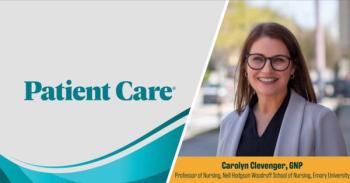Merck has announced additional phase 3 data showing that the investigational once-daily oral two-drug regimen of doravirine/islatravir (DOR/ISL) (100 mg/0.25 mg) had minimal effects on weight, body composition, and fasting lipids in adults with virologically suppressed HIV-1 infection.1
The findings were presented at the 20th European AIDS Conference, October 15-18, 2025, in Paris.
The data were drawn from 2 ongoing phase 3 studies: MK-8591A-052, comparing DOR/ISL with bictegravir/emtricitabine/tenofovir alafenamide (BIC/FTC/TAF), and MK-8591A-051, comparing DOR/ISL with participants’ baseline antiretroviral therapy (bART). Both trials previously demonstrated that DOR/ISL maintained viral suppression and was non-inferior to the comparator regimens, with no treatment-emergent resistance to either agent.1
Weight Remained Stable After Switch to Two-Drug Regimen
In trial MK-8591A-052, participants who switched to DOR/ISL from BIC/FTC/TAF showed minimal changes in weight and body composition at week 48 (exploratory endpoints), comparable to those who continued BIC/FTC/TAF.1
The mean weight change from baseline at week 48 for the DOR/ISL treatment group was −0.03 kg (95% CI, −0.54 to 0.48) versus +0.28 kg (95% CI, −0.32 to 0.88) for the BIC/FTC/TAF group. The mean percentage weight change from baseline was 0.10% (95% CI, −0.50 to 0.69) for DOR/ISL (n=316) compared with 0.39% (95% CI, −0.31 to 1.09) for BIC/FTC/TAF (n=163).1
At week 48, 14.6% and 3.5% of participants who switched to DOR/ISL experienced at least 5% and at least 10% weight gain from baseline, respectively, compared with 16.0% and 2.5% of participants who continued BIC/FTC/TAF. Mean percent changes in lean body mass, peripheral fat, trunk fat, body mass index, and waist-to-hip ratio were small and comparable between the two treatment groups.1
Fasting Lipids, Insulin Resistance Showed No Meaningful Changes
Across both trials, the pooled DOR/ISL group's mean changes from baseline in fasting lipids—including total cholesterol, high-density lipoprotein, low-density lipoprotein, and triglycerides—were minimal, with no substantial differences from comparator groups (exploratory endpoint in MK-8591A-052; secondary endpoint in MK-8591A-051).1
Mean changes in fasting insulin, glucose, and homeostatic model assessment of insulin resistance (HOMA-IR) were minimal across groups (exploratory endpoints). The proportion of participants with type 2 diabetes who modified their diabetic medication was less than 5% across treatment groups.1
A comparable proportion of participants initiated lipid-lowering therapy across the two trials: pooled DOR/ISL 4.8%, BIC/FTC/TAF 4.1%, bART 5.9%. Participants who entered the trials on lipid-lowering therapy were excluded from the fasting lipids analysis.1
Adverse Events Similar Between Treatment Arms
At week 48 in MK-8591A-052, the mean percent change in total lymphocyte and CD4 counts were similar for DOR/ISL and BIC/FTC/TAF. Drug-related adverse events (AEs) and discontinuations due to drug-related AEs were similar between groups (n=35, 10.2% for DOR/ISL and n=16, 9.4% for BIC/FTC/TAF; n=4, 1.2% for DOR/ISL and n=2, 1.2% for BIC/FTC/TAF, respectively).1
“The Week 48 results from the Phase 3 DOR/ISL trial (MK-8491A-052) are important to consider because they show minimal and similar changes in weight and body composition from baseline when participants switched to DOR/ISL.”
--Dr Chloe Orkin, dean for healthcare transformation, Queen Mary University of London
Rates of toxicity grade 3 or 4 AEs and serious AEs were similar for DOR/ISL and BIC/FTC/TAF (n=25, 7.3% for DOR/ISL and n=13, 7.6% for BIC/FTC/TAF; n=15, 4.4% for DOR/ISL and n=11, 6.4% for BIC/FTC/TAF, respectively). The most common AEs (greater than 6% in either study arm) were arthralgia, COVID-19, nasopharyngitis, and fatigue.1
One participant on DOR/ISL discontinued due to a drug-related serious AE (immune thrombocytopenia). There were 2 cases of low-level hepatitis B viremia (hepatitis B virus DNA less than 50 IU/mL) with no antigenemia or elevated transaminases in the DOR/ISL group and no cases in the BIC/FTC/TAF group; there were no cases of clinical hepatitis B virus reactivation.1
In MK-8591A-051, drug-related AEs were more commonly reported with DOR/ISL (n=44, 12.0%) than bART (n=9, 4.9%). Rates of toxicity grade 3 or 4 AEs and serious AEs were similar for DOR/ISL and bART (n=39, 10.7% for DOR/ISL and n=18, 9.7% for bART and n=23, 6.3% for DOR/ISL and n=9, 4.9% for bART, respectively). The most common drug-related AEs were diarrhea (DOR/ISL 3.3%, bART 0%), fatigue (1.9%, 0.5%), dizziness (1.9%, 0.5%), abdominal distention (1.6%, 0%), weight increased (1.6%, 0%), and headache (1.6%, 1.1%).1
"Weight and body composition are often central concerns for people living with HIV, who may face obesity and other weight-related issues," Dr Chloe Orkin, dean for healthcare transformation, Queen Mary University of London, said in a press release. "The Week 48 results from the Phase 3 DOR/ISL trial (MK-8491A-052) are important to consider because they show minimal and similar changes in weight and body composition from baseline when participants switched to DOR/ISL."1
Dr Eliav Barr, senior vice president and chief medical officer, Merck Research Laboratories, noted that "comorbid conditions play an important role in the overall care for people living with HIV. Shifts in weight, body composition and lipids can increase the risk of cardiovascular disease and complicate management of other chronic illnesses."1
These metabolic and body composition findings follow positive phase 3 efficacy data presented at the Conference on Retroviruses and Opportunistic Infections 2025, which showed that DOR/ISL maintained viral suppression and demonstrated noninferiority to BIC/FTC/TAF in MK-8591A-052 and baseline antiretroviral therapy in MK-8591A-051, with no observed treatment-emergent resistance to doravirine or islatravir.2
Islatravir (MK-8591), Merck's investigational nucleoside reverse transcriptase translocation inhibitor, blocks HIV-1 replication through immediate chain termination and delayed chain termination via structural changes in viral DNA. Beyond the daily DOR/ISL combination, islatravir is being evaluated in ongoing trials for potential once-weekly oral regimens with other antiretrovirals. The FDA accepted the New Drug Application for DOR/ISL in early 2025, with a PDUFA target action date of April 28, 2026.1,3
References:
- Merck Announces New Data from Phase 3 Trials Evaluating the Investigational, Once-Daily, Oral, Two-Drug Regimen of Doravirine/Islatravir (DOR/ISL) in Adults with Virologically Suppressed HIV-1 Infection. Merck. News release. October 15, 2025. Accessed October 15, 2025. https://www.merck.com/news/merck-announces-new-data-from-phase-3-trials-evaluating-the-investigational-once-daily-oral-two-drug-regimen-of-doravirine-islatravir-dor-isl-in-adults-with-virologically-suppressed-hiv-1-infecti/
- Merck Announces Positive Data from Phase 3 Trials that Show the Investigational, Once-Daily, Oral, Two-Drug Regimen of Doravirine/Islatravir (DOR/ISL) Maintained HIV-1 Viral Suppression at Week 48. Merck. News release. March 12, 2025. Accessed October 15, 2025. https://www.merck.com/news/merck-announces-positive-data-from-phase-3-trials-that-show-the-investigational-once-daily-oral-two-drug-regimen-of-doravirine-islatravir-dor-isl-maintained-hiv-1-viral-suppression-at-week-48/
- U.S. FDA Accepts New Drug Application for Merck’s Doravirine/Islatravir, an Investigational, Once-Daily, Oral, Two-Drug Regimen for Treatment of Adults with Virologically Suppressed HIV-1 Infection. Merck. News release. July 10, 2025. Accessed October 15, 2025. https://www.merck.com/news/u-s-fda-accepts-new-drug-application-for-mercks-doravirine-islatravir-an-investigational-once-daily-oral-two-drug-regimen-for-treatment-of-adults-with-virologically-suppressed-hiv-1-infe/



















































































































































































































































































